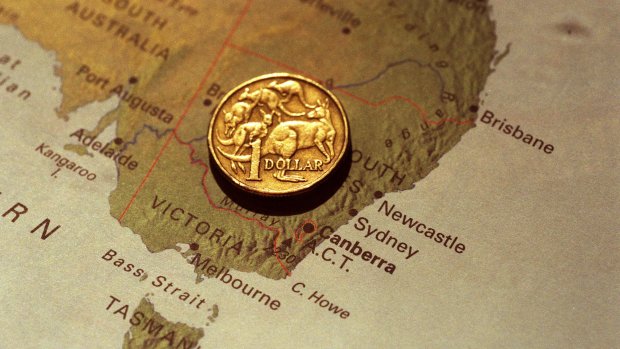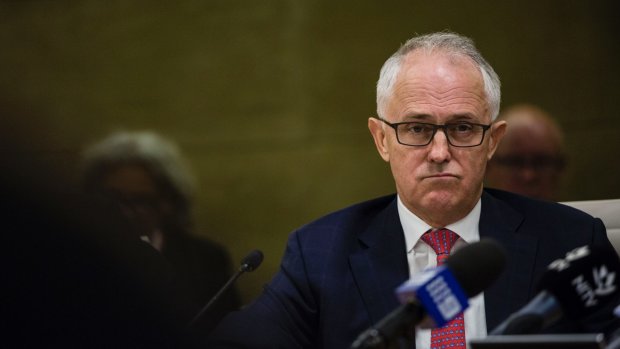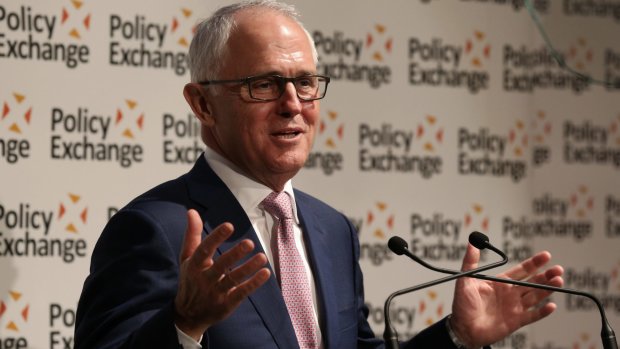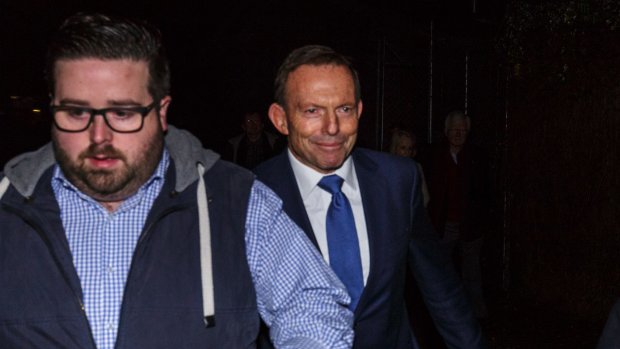Britain's chattering classes have reached a new consensus: liberal free market economics is unpopular and a failure.
 This is an extraordinary shift. Just 20 years ago, as the Soviet Union collapsed, the prevailing view — brought to the fore by Francis Fukuyama — was that liberal market ideas would dominate from then on. Most of Asia was adopting the market model; Margaret Thatcher and Ronald Reagan had reinvigorated economic liberal ideas; and their successors from rival political backgrounds, such as Tony Blair and Bill Clinton, largely "me-toed" them.
This is an extraordinary shift. Just 20 years ago, as the Soviet Union collapsed, the prevailing view — brought to the fore by Francis Fukuyama — was that liberal market ideas would dominate from then on. Most of Asia was adopting the market model; Margaret Thatcher and Ronald Reagan had reinvigorated economic liberal ideas; and their successors from rival political backgrounds, such as Tony Blair and Bill Clinton, largely "me-toed" them.
Today, however, we are seeing the extraordinary success of Jeremy Corbyn in Britain, Donald Trump's protectionism in America, and the rejection of markets by a resurgent European far Right.
The response from much of the centre-Right has been to move to the Left. When Theresa May talks about "the new centre ground", as she did last year in her keynote address to the Conservative Party Conference, what she really means is a willingness to adopt the Left's ideas — be it more spending, higher taxes or more regulation — because it is thought to be popular.
This won't work economically, and hasn't worked politically. It doesn't seem genuine or believable. Indeed, all it does is increasingly lead the electorate to choose those who really do passionately believe in spending, taxing and regulating.
So why are those that support economic freedom losing? And what can be done about it?
The simple answer is that it is a victim of its own success.
Liberalised markets have pulled over a billion people out of poverty, delivered the lowest level of global inequality since the Industrial Revolution, and made our lives longer and more satisfying. But by appearing to have won the ideological fight, the Right made a fatal error: political leaders stopped making the case.
This worked for a little while, when voters had a memory of the heinous stagflation — low growth, high unemployment, and high inflation — of the 1970s.
Today, it doesn't. The young, who turned out at Britain's general election in higher numbers than at any time in the last two decades, have never had to experience the reality of Corbyn's policies.
The standard explanation is that the youth are attracted to so-called "freebies" — like free university education. The truth is far more scary: young people have been genuinely persuaded by socialism, partly because so few people have bothered to debunk the myths that underpin that cause.
This failure to make the case became paramount after the financial crisis — which was falsely blamed on liberal markets rather than a toxic cocktail of bad government policy.
The Conservative election campaign failed to make the case for economic freedom. May completely lacked the philosophical basis to respond to Corbyn's policies — and it certainly didn't help that her policies, such as an energy price cap, were so ideologically similar. How can you criticise bigger government when that's what you are proposing as well?
Conservatives like to talk a lot about "compassionate conservatism". The reality is that the most compassionate policies are those that make everyone better off by making the pie bigger — not just the chosen few by redistributing the pie.
They're the policies that help people experience the dignity of work and give them more choice over their lives. They're the policies that allow people to start up their own enterprises without the relentless stranglehold of red tape. They're the policies that let people keep a bit more of their own money through lower taxes.
Recently, the two most successful centre-Right leaders who have made this case are probably John Key, the former prime minister of New Zealand, and the UK's own David Cameron.
Key left on his own terms after lowering taxes, reducing the size of the state, and winning majorities in a proportional system. Cameron pulled the UK economy out of the dustbin, reduced tax, helped create millions of jobs, reformed welfare, won the first Conservative majority for decades and — perhaps to his own regret — gave the people a democratic choice on the European Union.
The case for prosperity and choice is never easy to make. But adopting the rhetoric and policies of the Left just won't work either — as May found out last month. That's why we must be willing to stand steadfast behind what has made the world richer and more successful — namely empowering individuals to succeed, not burdening them with ever more government.
 Climate change policy should be informed by a sober assessment of the data and ultimately determined by the people's representatives, weighing up the costs against the impact any policy is likely to deliver.
Climate change policy should be informed by a sober assessment of the data and ultimately determined by the people's representatives, weighing up the costs against the impact any policy is likely to deliver. The report attributes this rise to more indigenous people being charged with, and imprisoned for, stalking and intimidation offences, defendants spending more time on remand and more breaches of good behaviour bonds and suspended sentences leading to imprisonment.
The report attributes this rise to more indigenous people being charged with, and imprisoned for, stalking and intimidation offences, defendants spending more time on remand and more breaches of good behaviour bonds and suspended sentences leading to imprisonment. Arguments about inequality are always a two-pronged attack on the status quo. First that inequality is somehow bad, and second that a soak-the-productive will improve inequality by equally impoverishing everyone. I'm quite certain that North Korea has low levels of inequality.
Arguments about inequality are always a two-pronged attack on the status quo. First that inequality is somehow bad, and second that a soak-the-productive will improve inequality by equally impoverishing everyone. I'm quite certain that North Korea has low levels of inequality. The application of drones in agriculture alone is estimated to be worth an enormous $32 billion globally. How can Australian regulators make sure we embrace this revolution?
The application of drones in agriculture alone is estimated to be worth an enormous $32 billion globally. How can Australian regulators make sure we embrace this revolution? The
The  The Australian Gold Rush didn't just produce enormous wealth. The Chartists on the Victorian goldfields in the 1850s, and the demands they made after the Eureka Stockade, permanently shifted our political landscape.
The Australian Gold Rush didn't just produce enormous wealth. The Chartists on the Victorian goldfields in the 1850s, and the demands they made after the Eureka Stockade, permanently shifted our political landscape. Apparently a
Apparently a  In a speech dedicated to Benjamin Disraeli, one of the founders of the United Kingdom's Conservative party, Turnbull mounted an argument for the state's role in securing the borders and fighting terrorism, rightly framing this as necessary for defending liberal values. The speech, though, ultimately showed a government bereft of sound philosophy and trapped in the language of its opponents, its leftward drift distinguished by vague gestures towards pragmatism.
In a speech dedicated to Benjamin Disraeli, one of the founders of the United Kingdom's Conservative party, Turnbull mounted an argument for the state's role in securing the borders and fighting terrorism, rightly framing this as necessary for defending liberal values. The speech, though, ultimately showed a government bereft of sound philosophy and trapped in the language of its opponents, its leftward drift distinguished by vague gestures towards pragmatism. So, you may believe in climate change from natural causes, but if you don't believe it is human-caused right now — at this point in our history: you are best described as a "doubter".
So, you may believe in climate change from natural causes, but if you don't believe it is human-caused right now — at this point in our history: you are best described as a "doubter". Our social services are organised by massive databases. Health, welfare, education and the pension all require reams of information about identity, social needs, eligibility, and entitlement.
Our social services are organised by massive databases. Health, welfare, education and the pension all require reams of information about identity, social needs, eligibility, and entitlement. The evidence, however, for a rise in global temperatures is actually not that compelling — unless you believe the output from computer models. Rather, since at least November 2009 there has been evidence piling up and up, and up some more, that key temperature records are being remodelled to prop-up the notion that global temperatures are rising — and to agree with the output from the computer models.
The evidence, however, for a rise in global temperatures is actually not that compelling — unless you believe the output from computer models. Rather, since at least November 2009 there has been evidence piling up and up, and up some more, that key temperature records are being remodelled to prop-up the notion that global temperatures are rising — and to agree with the output from the computer models. The Prime Minister's remarks were made as part of
The Prime Minister's remarks were made as part of  The trouble is that while Dutton wants the support of "rusted on conservatives", his party haven't returned the favour.
The trouble is that while Dutton wants the support of "rusted on conservatives", his party haven't returned the favour. I went 12,000 miles to save my life. After being declared terminally ill two years ago, I moved from Melbourne to the UK to enter a clinical trial of an experimental drug at Barts Hospital in London.
I went 12,000 miles to save my life. After being declared terminally ill two years ago, I moved from Melbourne to the UK to enter a clinical trial of an experimental drug at Barts Hospital in London. Nonetheless, we should be optimistic about our future. Here are five steps the government should follow to turn the economy around and restore prosperity.
Nonetheless, we should be optimistic about our future. Here are five steps the government should follow to turn the economy around and restore prosperity. Note already the difference with Australia — in America, the government is aiming for "energy dominance" whereas in Australia the government is just trying to
Note already the difference with Australia — in America, the government is aiming for "energy dominance" whereas in Australia the government is just trying to  You'd immediately hone in on the fact that the South Australian government has doubled down on the Federal Coalition's bank levy by introducing its own state bank levy.
You'd immediately hone in on the fact that the South Australian government has doubled down on the Federal Coalition's bank levy by introducing its own state bank levy.